Gentle Remedies for your Garden and Farming
Although homeopathy’s effectiveness is still scientifically disputed, practical experience shows again and again that it works. For people, animals and even plants. Find out here how it works.
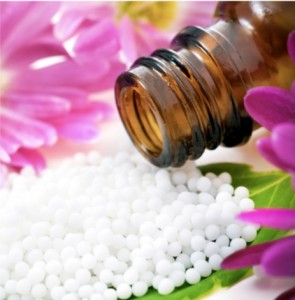
Plants love Homeopathic Remedies too! This discovery is relatively new – but it is finding ever more enthusiastic followers
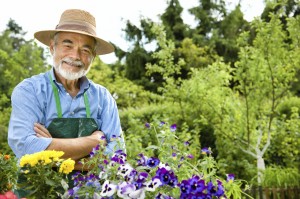
Homeopathy is gaining in popularity not only in this country. Because of its gentle effectiveness. The finding that even plants respond to homeopathic remedies is fairly new and has become more widespread over the past few years.
In her book entitled “Homeopathy for Plants – A practical guide for indoor, balcony and garden plants with tips on dosage, use and choice of potency”, Naturopath Christiane Maute describes how she discovered homeopathy for plants through a Larkspur (Delphinium consolida). This is a plant from the buttercup family – Ranunculaceae. Larkspur flowers are almost as complex as the Orchids. She has used homeopathic medicine for years to treat her patients successfully. Then one day she bought a Larkspur at the market. When planting it, she dropped it and the main stalk snapped.
She reports that she simply thought she would try Arnica 200 CH. She dissolved a few pellets in water and poured the medicinal mixture over the Larkspur. The next day it stood upright. At first she thought it was a coincidence. She didn’t bandage it or do anything else to it. And then she thought that maybe plants are just as perceptive to certain things as we are and continued testing.
Sometime later the cherry tree in her back yard was affected by brown rot tip drought. A fungal disease that was going around in the whole region at the time. The naturopath poured Thuja 200 CH over it. It had proved to be a good remedy for fungal infections from cold dampness. She reports that the tree recovered quickly, that dry leaves continued to fall but that healthy green started to grow soon. A little later she received a call from one of her neighbors wondering what she did to her cherry tree – it was the only one in the neighborhood that still had green leaves!
The discovery how homeopathy can help plants came about accidentally
How to find the correct remedy
It is within the nature of homeopathy to determine the totality of symptoms by taking a thorough case. The German doctor Samuel Hahnemann who founded the system of homeopathy, saw disease as an alteration of a healthy person’s state of wellbeing, which expressed itself in the form of symptoms. You would approach these by asking: What makes it better? Or worse? What’s the cause? How is the pain, how is the emotional state?
Depending on the corresponding answers, you could be choosing different remedies for similar complaints. But plants cannot be consulted like people can. The only means to come to a remedy selection here is by closely examining their symptoms and cause, and to interpret them as accurately as possible using your intuition. This is where you would rely on your experience in treating people.
Try the key symptom of a remedy that you would normally give to a person, on plants. For example, in cases of freezing where the leaves turn to a light or silvery colour, use Aconite 200 CH. When the leaves are more of a reddish colour use Belladonna 200 CH. Just like with a feverish child. If the child is pale then you know it is an Aconite fever. If is extremely red on the other hand, like a hot tomato, then the remedy is Belladonna. And you see this on the leaves too. You simply convert it one to one.
Homeopathic remedies work on plants similarly to how they act on people. For example, Arnica helps with injuries and Thuja with fungal infections.
Determining which remedy works for what plant problem is often a matter of experience. A recommendation would be using a remedy that is indicated for a person in the given circumstance
It is a matter of choosing the correct Potency
Dosage and potency are chosen as required. Christiane Maute states that here too she uses the same guidelines as she does for people. If the wants to strengthen an organ, she will choose an X potency. For example Calcium carbonicum or Magnesium phosphoricum, but also Ferrum phosphoricum or Kalium phosphoricum. The sames goes for fertilization of plants. She uses 6X potencies for these purposes. When using X potencies you will need half a teaspoon of small pellets dissolved in 10 litres of water.
The higher potencies such as 30 CH or 200 CH are used to treat plant diseases, pests or weather damage. But the dosage is much lower. She uses 6 to 8 pellets dissolved in 30 litres of water here.
The higher potencies are disputed the most among the homeopathic remedies because according to Avogadro’s Law you cannot detect any molecules from the original substance in them. Still, it is astounding to see how fast they act when the right remedy is chosen.
Conventional medicine likes to attribute the effectiveness of the higher potencies to the placebo effect. This means that pure belief in the curative power of an actually ineffective substance causes healing. But in plant homeopathy, this attempt to explain away the remedies’ effectiveness does sound rather strange. So should we then think that it is the gardener’s belief in Cimicifuga 30 CH which is telepathically transferred to plant lice that compels them to leave? Because this has indeed been confirmed numerous times – even though the lice are not impressed by the remedy itself in any other way.
Besides, the biophysicist Dr. Fritz-Albert Popp showed already decades ago that plants do measurably respond to homeopathic medicines up to a potency of at least 12X. When it came to the higher potencies he believed that the resonance principle known in physics could be responsible for the effectual cause. The fact alone that Popp accepted a research assignment for homeopathy, led to him being banned from lecturing and losing his position at the University of Kaiserslautern back then.
This is how it works
Choosing the right Remedy
Carefully observe the plant’s symptoms and all concomitants. Then use a homeopathic repertory to determine the correct medicine.
Practical Application
Use only one remedy at a time. Let the pellets dissolve in water, then pour or spray the medicinal water onto the plants. Avoid using metal spoons to stir the mixture. Do not pour the water over your hands and do not inhale the spray mist.
Dosage using CH potencies
For indoor plants use 4 pellets dissolved in 1 litre of water. For outdoor plants, 6 – 8 pellets to 30 litres of water.
Dosage using X potencies
A half tsp. of 6X pellets dissolved in 10 litres of water.
Re-dosing
After you first use a remedy, wait and see how the plant responds. If there is improvement, no further action is required. Re-dose only if the symptoms come back after initial improvement. You may wish to choose a higher potency this time. If the symptoms are not better, then change the remedy, and carefully re-examine the symptoms and causes.
For Rainy Days
If it rains for longer periods of time do not pour large amounts of water. In this case use only 6 to 8 pellets dissolved in 150 ml of water and apply in spoonfuls to the root areas.
A few pellets are often enough to heal plants. Even stubborn plant lice can be driven away with homeopathic medicines.
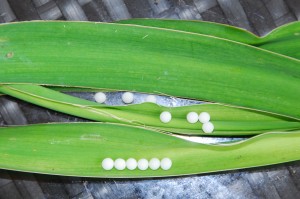
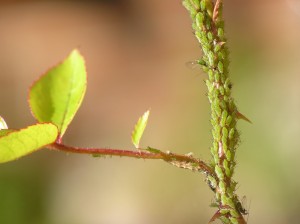
A Healthy Walnut Tree thanks to Homeopathic Remedies
Over the course of time, Naturopath Christiane Maute tried a number of homeopathic remedies for different events. Sometimes it took several attempts to determine the correct medicine. One day a neighbor came to her and complained about her walnut tree bearing black nuts. She first gave her Carbo vegetabilis 30 CH and then Arsenicum album 30 CH. Finally she thought that if the nuts are black, then they might have fallen victim to a fungus infection and tried the remedy Thuja 200 CH. The result: The walnut tree cast three black nuts. In the year before it was thousands of black nuts!
In the treatment of trees it has been found that pouring the medicinal water over the tree trunk and the soil within the radius of the tree crown was effective. Smaller plants can be watered or sprayed.
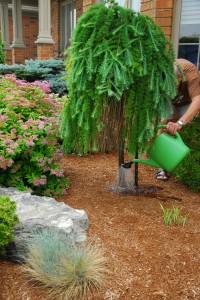
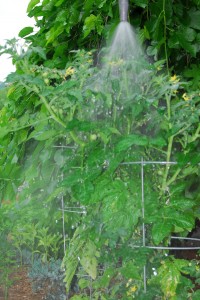
To treat your plants homeopathically, dissolve the pellets in water. Then rain it on the plants, spray it on or pour it in the area of the root ball.

Simple Instructions for Treatment
The indications in plant homeopathy are surprisingly diverse: Bacteria, viruses, weather damage, fungi, pests and even “emotional” problems. The practical examples that are easiest to follow are ready-made prescriptions in homeopathy. Slumping, a blow or a fall will respond well to Arnica. Cracks respond to Calendula or cuts after pruning are treated with Staphysagria 200 CH. When replanting or relocating a plant, Christiane Maute uses Arnica, simply to encourage root formation again.
Sometimes plants can be downright offended or very sensitive and then she gives Ignatia, a remedy for grief. Even when they are neglected when you are away on vacation for example, she gives a grief remedy which is a salt at the same time: Natrium chloratum in 30 CH.
The stress a plant is subjected to on relocation or pricking out can be relieved homeopathically as well – using Calendula 30 CH for example. Calendula has been found to act as an antiseptic and re-constructively and it makes the plant less prone to disease and bugs. The same goes for seeds – therefore she recommends that you put the seeds in Calendula water for a few hours prior to seeding your vegetable or flower plants. Two pellets to one litre of water will be enough.
Homeopathy even has antagonists to help treat scale insects and inch worms.
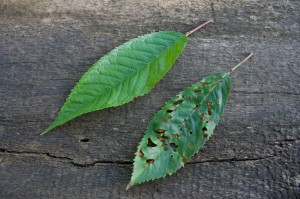
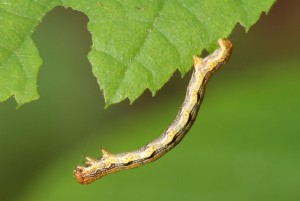
How to Protect the Environment
In plant homeopathy, not only the Law of Similars is effective. For this reason, agents that are commonly used in agriculture can be applied homeopathically. For example Petroleum for scale insects, or Copper and Sulphur for mildew.
In this way, the same effects are achieved in a gentler, cheaper and environmentally friendlier way – and this is one of the main advantages of plant homeopathy: getting away from the countless pesticides that poison not only our environment but in the end more and more us ourselves.
Another advantage of plant homeopathy is that it can be used proactively as well, for example for difficult to predict changes in the weather. Christiane Maute states that if she applies Aconite 200 CH early in the spring before budding, before proliferation of the leaves of the roses, and Belladonna 200 CH one week later, then frost damage is minimal. The plants also get black spot disease or rust fairly late in the season. Or, if it rains for a longer period of time and the roots of tomato plants are standing in the wet, then she gives Natrium sulphuricum 30 CH proactively. If it is cold, simply Belladonna 200 CH. This will start the heat. This will give them another good boost and the tomato late blight is significantly less.
Blight or rust are fungal infections that like to infest roses
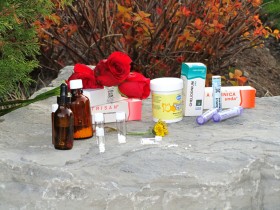
Applications for Gardeners
Plant Lice
- Cimicifuga 30 CH (rolled up leaves/ flowers, sticky secretions) – works really well for roses and rosaceae
- Natrium chloratum 30 CH (for neglect or over-fertilization)
- Psorinum 200 CH (weak, puny plant sensitive to the cold)
- Staphysagria 200 CH (plant weakened by injury)
Spider Mites
- Petroleum 30 CH (outdoor: weakness after the cold, indoor: warm, dry air, lack of light)
- Psorinum 200 CH (weak, puny plants sensitive to the cold)
- Sulphur 200 CH (sensitive to the cold, thirsty plant with problems absorbing water)
Whiteflies
- Psorinum 200 CH (weak, puny plants sensitive to the cold)
Sulphur 200 CH (sensitive to the cold, thirsty plant with problems absorbing water)
Snails
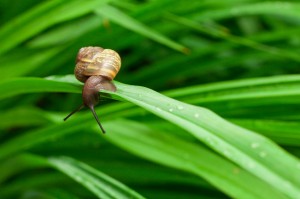
Helix tosta 6X (put the remedy in water and pour it over the ground)
Brown Rot
- Carbo vegetabilis 30 CH (yellowish-brown leaves, black fungal spots, sensitive to the cold)
- Cuprum metallicum 30 CH (brown leaves, result of wetness)
- Natrium sulphuricum 30 CH (result of long periods of rain with humid weather)
Thuja 30 CH / 200 CH (result of long periods of rain with cold weather)
Blight
(grey-whitish layer on the leaf surface)
- Cuprum Metallicum 30 CH (white layer on the leaf surface)
- Natrium sulphuricum 30 CH (after humid warm weather)
- Thuja 30 CH (rainy spring and summer)
Lettuce Downy Mildew
(grey to greyish-purple layer on the leaf’s underside)
- Cuprum Metallicum 30 CH (after lots of rain)
- Natrium sulphuricum 30 CH (after rain with humid warm weather)
- Thuja 30 CH / 200 CH (after long periods of rain)
Sulphur 200 CH (in the heat or cold followed by heat)
Black Spot Disease
(black, star-shaped spots on green leaves)
- Carbo vegetabilis 30 CH
- Cuprum metallicum 30 CH (after lots of rain)
- Natrium sulphuricum 30 CH (after rain with humid warm weather)
- Thuja 30 CH / 200 CH (after damp cold weather, high humidity)
- Rhus toxicodendron 30 CH (after cold, wet weather)
Leaf Spot Disease
- Lycopodium 30 CH (bugs and wet weather)
- Rhus toxicodendron 30 CH (after cold, damp weather)
Injuries
- Aconite 200 CH (after a sudden storm, cold front)
- Arnica 200 CH (slumping, a blow or a fall)
- Calendula 30 CH (abrasions, cracks)
- Gelsemium 200 CH (injury due to repotting)
- Staphysagria 200 CH (cuts after pruning of trees)
General Weakness
- Arsenicum Album 200 CH (plant stays small, after periods of heat and dryness)
- Calcium carbonicum 6X (good fertilizer for lime-deficient soil)
- Calendula 30 CH (weakness due to torn off roots or injury)
- Kalium phosphoricum 30 CH (at first lush, then begins to ail)
- Psorinum 200 CH (dwarfish, not thriving plants)
- Silicea 200 CH (strengthening of the plant’s cellular tissue)
Thuja 30 CH / 200 CH (after wet cold weather, high humidity)
Exchange of Experiences is important
Homeopathy by principle is a science based on experience. And with respect to plants we are really only at the beginning. In her book which has become a bestseller in the meantime, Christiane Maute addressed a large number of plant lovers and started an active exchange of experiences. There have been numerous reports from plant lovers, one for example of a lady stating that although she is not a big gardener, using Aconite for rose rust gave her a huge sense of achievement – her roses have never before been this nice!
How Professionals are using this Knowledge
But it’s not only the home gardeners who are favoring homeopathy over pesticides. Followers include seasoned professionals as well, whose existence depends upon the growth and wellbeing of their plants. It’s been an exciting journey for many. Seeing mealybugs disappear after being treated with Cimicifuga 30 CH, for example. These are difficult to combat using even conventional / chemical substances. Or to see the robust scale insects die off as if by magic, thanks to Petroleum 30 CH.
Of course there have been disappointments too, because the correct remedy is not always obvious at first. But all in all, success speaks for itself. Some horticultural engineers have reported using 90 % less chemistry in the past year thanks to homeopathy and plant fortifiers. This was possible because preventative homeopathic measures were taken and only the seemingly unsolvable acute problems were combatted using classical fixes.
Pellets – Success in the Vineyard too!
These experiences are exemplary for the vineyard too as they offer a promising outlook, economically and environmentally. There are wine growers in Germany who have farmed their vineyards not only organically, but using homeopathy as well. And the resulting wine has earned numerous awards of excellence.
Always in tune with Nature
You need to watch for sufficient greening in between the vine rows, to think holistically, so to say. The more you are concerned with the vine, making sure that it feels good within a diversity of flora, the more you can be certain of a resulting product that you can be proud of. By abandoning pesticides and chemical fertilizers, a better quality of grape can be achieved.
Higher potencies that are used include for example Belladonna to reduce susceptibility to infections in hot humid weather and Dulcamara in damp foggy weather. Also, Cuprum has been used for Lettuce Downy Mildew, preventatively too, and Aconite for sudden events such as a cold front coming through. Silicea is used on the vineyard to strengthen the tissue structure of leaves and new shoots, and Arnica for injuries of vines and grapes.
Medium to low potencies are also used when needed: For example Hypericum 6X if the sun is too strong or Crategus if a vine needs a boost to get over critical situations. The German wine maker Rainer Loacker who is also founder of the Italian homeopathic manufacturing company Remedia, has demonstrated for the past 35 years that success in the vineyard is possible using biodynamics and homeopathy. But he hasn’t found many followers yet, because most of his colleagues find his method too cumbersome. He feels that if you want to use homeopathic medicines then you really need to delve into it. Because homeopathy is so comprehensive that he has never really stopped learning, he says.
Still, it would be desirable to have the enthusiasm for plant homeopathy that we see among home gardeners expand also to full-time farmers. Because every reduction in pesticides that poison us and our environment is to be welcomed. Besides, this offers not only a health and environmental advantage, but also an economical advantage which is not to be poked fun at. Because 30 litres of homeopathic medicinal water cost no more than $ 0.30, as calculated by Christiane Maute.
Your Feedback is Welcome
I would like to encourage you to try treating your plants homeopathically this summer. You may be pleasantly surprised by how well your plants respond. Although plant homeopathy is fairly new, I have always been in the habit of adding left-over remedy water to my plants and they are all doing really well. As well, I have planted tomatoes, peppers and all kinds of herbs in my garden this year and will definitely treat them homeopathically should the need arise. You will be able to purchase the remedies listed in this article from our clinic up to a potency of 30 CH. And if you do decide to try plant homeopathy, let me know about the results – I am still learning about this too!
In the meantime, if you have any questions about this article, homeopathy in general, or any other service offered at our clinic, please call us at (519) 603-0505 and we will be happy to help.
Have a wonderful summer!
In health,
Irene Schwens, DHMHS, C.Tran.
Owner / Homeopath
K-W Homeopathic Medicine and Wellness Clinic








